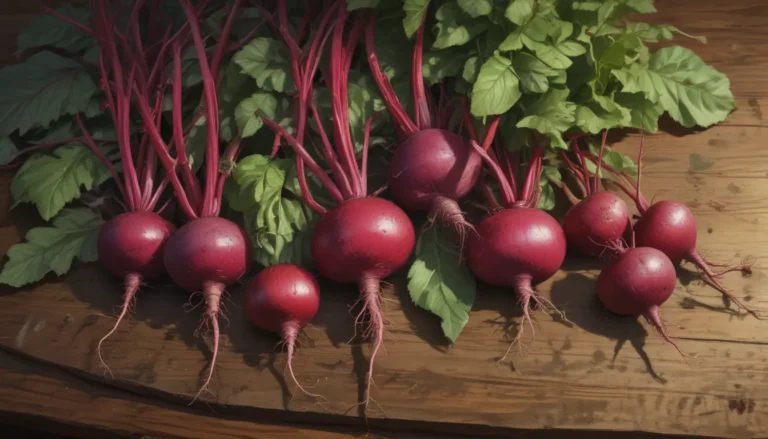Ultimate Guide to Dividing Dahlias for Maximum Blooms and Beauty

Are you ready to take your gardening skills to the next level and learn how to successfully divide dahlias in your garden? If so, you’re in luck! In this comprehensive guide, we will cover everything you need to know about dividing dahlias, from why you should do it every year to the tools you’ll need and the best time to lift and divide these beautiful flowers.
So grab a cup of tea, sit back, and get ready to dive into the fascinating world of dividing dahlias to maximize their growth and beauty!
What You’ll Learn
Before we get started, let’s take a look at what you’ll learn in this guide:
- The three important parts of the tuber
- Why it’s essential to divide every year
- When to lift and divide
- Summer prep for better tubers
- Tools you’ll need
- How to lift dahlias
- How to divide dahlias
Now that you know what to expect, let’s dive into the world of dahlias and learn how to divide them like a pro!
The Three Important Parts of the Tuber
Tubers are the key to next summer’s beautiful dahlias, and it’s essential to understand the three important parts of the tuber to ensure successful division and propagation.
The tuber consists of three main parts: the crown, the neck, and the body.
- The crown: This is where a dahlia’s reproductive information is stored, and it’s the knobbly bit at the top of the slim neck. Next year’s plant will sprout from the eyes on the crown in spring.
- The neck: This part joins the body to the crown, and if it’s damaged, the whole tuber needs to be discarded.
- The body: This is the carbohydrate-rich storage structure that holds nutrients over winter and feeds the plant as it grows. The body needs to be big enough to provide energy for growth but not too shriveled.
Understanding these three parts is crucial to successful dahlia division and propagation.
Why You Should Divide Every Year
Dividing dahlias every year is essential for optimal plant growth, more flowers, and healthier tubers. Leaving clumps in the soil for multiple years can lead to heavy, tangled clumps that are challenging to divide and can cause damage to the tubers.
Dividing annually also reduces the risk of rot, protects against pests, and ensures soil fertility in dahlia beds. Additionally, dividing every year makes the process easier and less time-consuming, leading to healthier plants and more blooms.
So don’t skip the annual division! Your dahlias will thank you with stunning blooms and healthy growth.
When to Lift and Divide
Knowing when to lift and divide your dahlias is crucial to successful propagation. Whether you’re in a colder climate with freezing temperatures or a warmer climate with milder winters, it’s essential to follow the recommended guidelines for lifting and dividing.
In colder climates, it’s best to lift tubers after the first frost that’s cold enough to kill the foliage. In warmer climates, you can leave clumps in the soil for two years or more, then divide and replant in spring.
However, regardless of your location, it’s best to lift and divide every year for optimal plant growth, more flowers, and healthier tubers.
Summer Prep for Better Tubers
Taking the time to assess your dahlia plants over the summer can lead to healthier tubers and more beautiful blooms next season. Look for signs of poor flowering, viral infections, or overcrowding in clumps that haven’t been divided for a long time.
Focus on feeding your plants with a high-potash fertilizer in late summer or early fall to boost nutrient uptake and prepare them for winter dormancy. Additionally, cutting back stems and labeling varieties during flowering can help you identify plants for division later on.
By preparing your dahlias for winter dormancy, you set the stage for healthier tubers, more blooms, and a more successful division process in the future.
Tools You Will Need
Having the right tools for dividing dahlias is essential for clean cuts and successful propagation. Make sure you have a range of sharp, sanitized tools like spades, loppers, garden shears, and knives to make precise cuts and prevent disease transmission.
Using a 10 percent bleach-to-water solution to sterilize your tools before and after processing clumps can help reduce the risk of rot and fungal infections. Additionally, storing clean, dry tools in an airy place can prevent rust and maintain tool integrity over time.
By having the right tools on hand and properly caring for them, you’ll set yourself up for success when dividing your dahlias.
How to Lift Dahlias
Lifting dahlias requires a gentle touch to avoid damaging the tubers. Using a fork or shovel to slice around the clump and lift it out of the ground can help prevent damage and ensure a successful division process.
Once you’ve lifted the clump, gently remove excess soil and allow the tubers to dry and stiffen before dividing them. Washing off dirt or leaving it in place can be a matter of preference, but allowing the necks to dry before division is essential for preventing damage.
Knowing the best practices for lifting dahlias can lead to healthier tubers, more successful division, and more beautiful blooms in the future.
How to Divide Dahlias
Dividing dahlias can be a precise and delicate process that requires attention to detail and care. Following these steps can help you successfully divide your tubers:
- Cut up big clumps: Dividing large, tangled clumps can be challenging, but using a sharp spade to cut them into smaller pieces can make the process easier and less damaging to the tubers.
- Remove what you don’t want to keep: Discard thin roots, damaged or rotting tubers, and the mother tuber if necessary. Keeping only healthy, viable tubers can ensure successful propagation and healthier plants.
- Making the best cuts: Ensure each tuber has a quarter to half square inch of crown attached to support future growth. Making precise cuts through the crown and tubers can lead to healthier plants and more blooms.
By following these steps, you can successfully divide your dahlias and propagate more plants for your garden.
Free Dahlias for Your Garden
Dahlias are generous plants that provide endless opportunities for propagation and division. By following the techniques and tips outlined in this guide, you can enjoy more beautiful blooms and healthy plants in your garden.
Whether you’re a seasoned gardener or new to dahlia cultivation, understanding the importance of dividing and propagating these gorgeous flowers can lead to a more successful growing experience and a more beautiful garden.
So go ahead and put your newfound knowledge to the test! Divide your dahlias with confidence and watch as your garden bursts with colorful blooms and vibrant beauty.
What are your top tips for dividing dahlias? Share your insights and experiences in the comments section below, and don’t forget to snap a photo of your beautiful dahlias to share with fellow gardeners!
For more delightful dahlia info, check out these guides next:
- How to Propagate Dahlia Stem and Tuber Cuttings
- Dahlia Flower Types: A Guide to Groups and Classification
- 19 of the Best Flowering Companion Plants for Dahlias
- How to Identify and Control Dahlia Pests
Happy gardening!
In conclusion, dividing dahlias is an essential gardening practice that can lead to healthier plants, more blooms, and a more beautiful garden. By following the tips and techniques outlined in this guide, you can successfully divide your dahlias and enjoy the benefits of propagation and healthy growth in your garden. So grab your tools, get ready to divide, and watch as your garden blooms with vibrant dahlias and colorful flowers!





